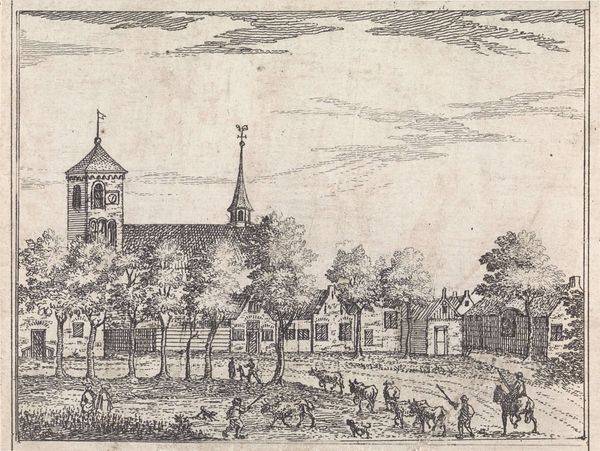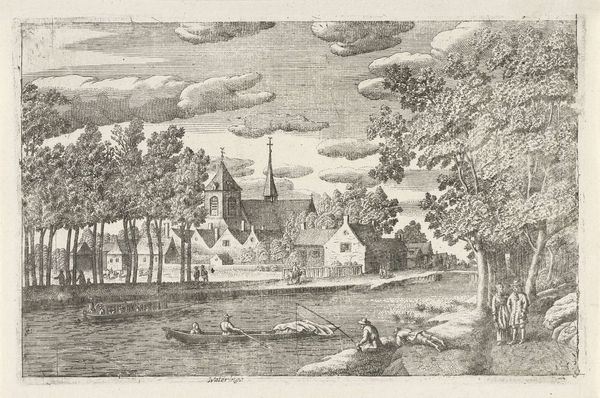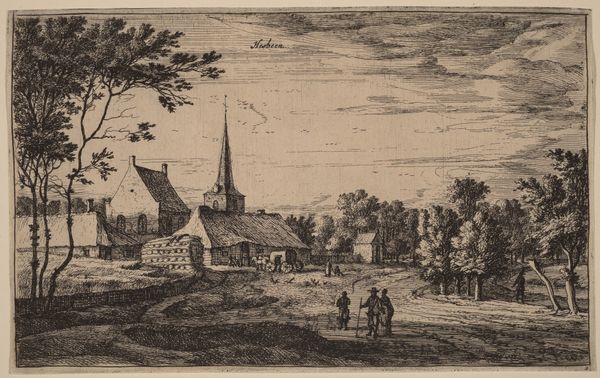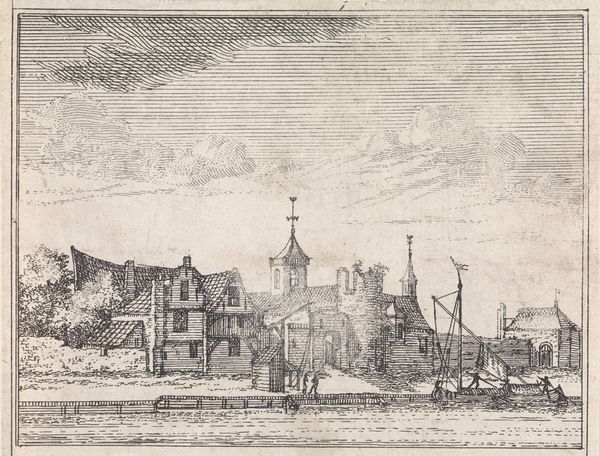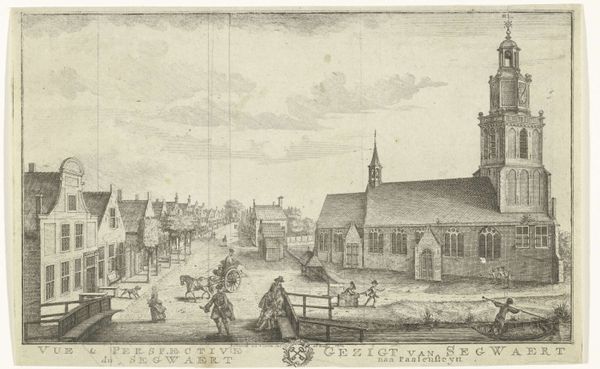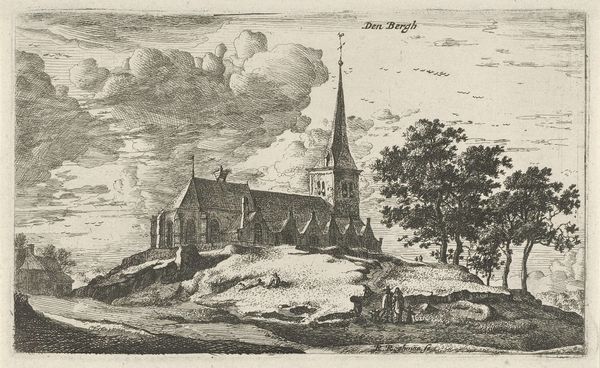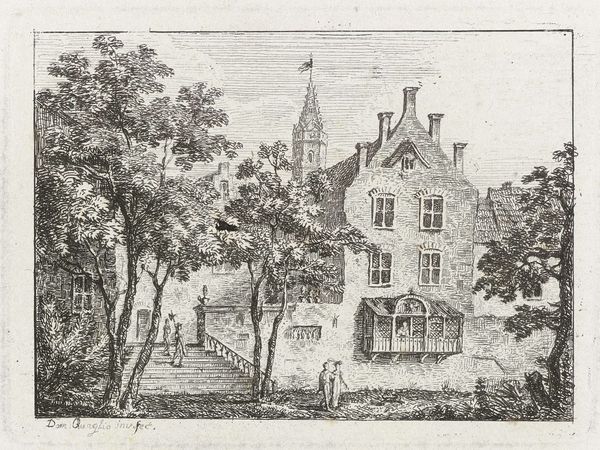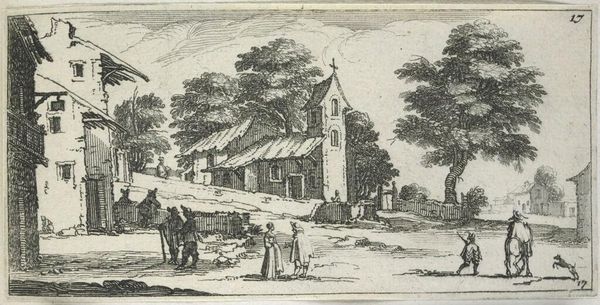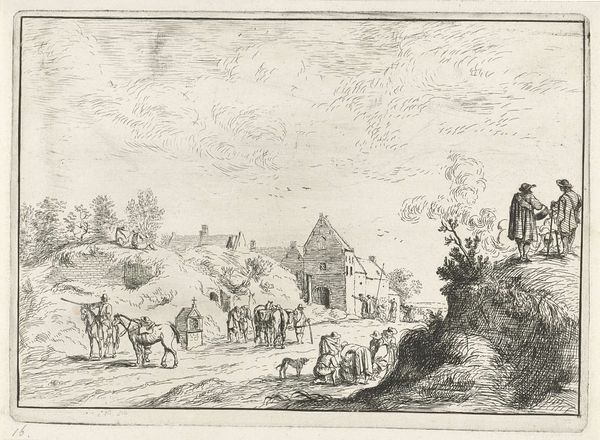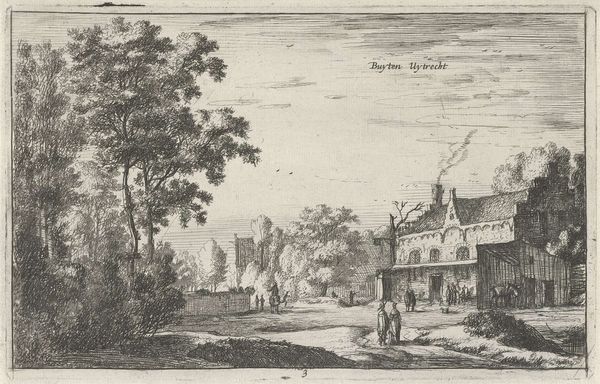
drawing, print, etching
#
drawing
#
baroque
#
dutch-golden-age
# print
#
etching
#
landscape
#
cityscape
#
realism
Dimensions: height 102 mm, width 157 mm
Copyright: Rijks Museum: Open Domain
Curator: Before us, we have Claes Jansz. Visscher's "Leprozenhuis in Haarlem," a print made using etching and drawing techniques sometime between 1612 and 1652. Editor: It's a striking scene. The crisp lines create a somewhat bleak atmosphere, especially considering it’s daytime. Curator: Visscher’s use of etching is critical here. The precision allowed for incredible detail. Think of the physical process. Applying the ground, scratching through it to expose the copper, biting with acid, inking, and finally, the press. Each step involves intense labor. It gives you pause about the economics that made this possible. Editor: Absolutely. The socio-economic structures were definitely at play. Institutions like the Leprozenhuis, a leper colony, appear repeatedly in art, underscoring the role of civic entities during outbreaks. And, well, the image does seem a little…staged? Are we seeing a "true" slice of life? Curator: That's precisely where things get interesting! Consider the market for these prints. Views of cities were fashionable and the printmaking trade grew immensely with it. There was immense pressure from publishers on artists to romanticize what they documented. Did Visscher's relationship with the Haarlem authorities influence this composition? Were they active patrons? We also need to remember how he might have sourced his copperplates – probably from the mines of Europe! It adds a deeper perspective of labor. Editor: The people, though…the stark rendition of those afflicted emphasizes societal segregation but maybe offers commentary as to its purpose. It visually encapsulates Haarlem's efforts—however flawed—to confront health crises. Curator: The fences reinforce the concepts of 'containment' and control. Dutch society had precise ways of controlling even these communities and spaces. The print form, moreover, ensured its replication and widespread viewing. The politics of the image and the material reality collide so intriguingly. Editor: Seeing it laid out this way definitely adjusts my original feeling of simple gloom into a richer analysis of labor and control. Curator: Exactly, seeing these types of etchings within its political, technological, and market-driven context unveils another facet to what was meant by documenting everyday life. Editor: Indeed. This wasn't just an image; it was labor made visible, shaped by specific pressures and choices. It gives us much to contemplate beyond what first meets the eye.
Comments
No comments
Be the first to comment and join the conversation on the ultimate creative platform.
